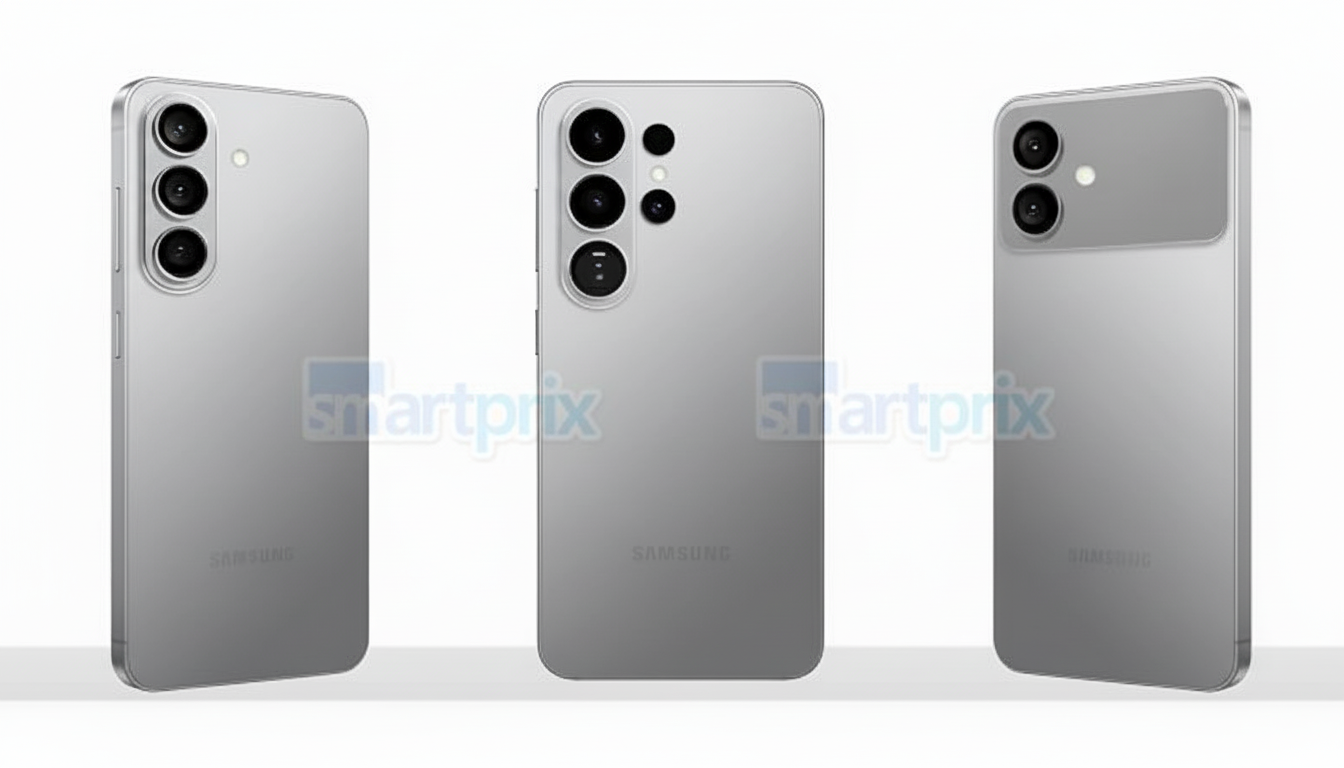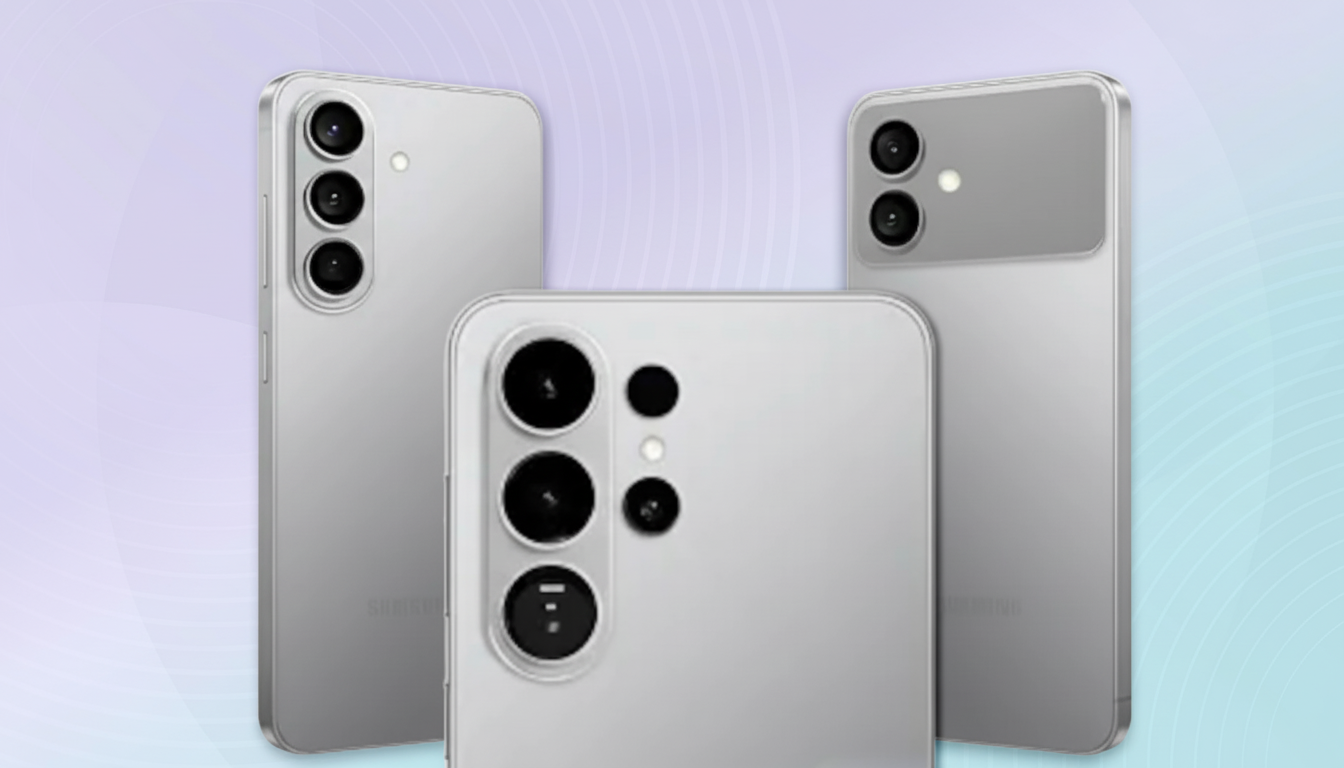Samsung has taken the stage for its next flagship smartphones, outlining headline upgrades for the Galaxy S26 series during its latest earnings call. A report from Android Authority notes that a senior executive summarized the lineup’s pitch in just three bullet points: user-focused next-gen AI, a second-generation custom application processor, and new camera sensors mainly focused on improving overall image quality.
- User-focused next-gen AI
- Second-generation custom application processor
- New camera sensors aimed at better overall images
Samsung details its user-focused next-generation AI plans
“User-centric” AI implies—quietly, in the background and on-device—Samsung will double down on features. The current wave of Galaxy AI offered practical tools for the first time: live translation for calls and Circle to Search. If priorities are expanded, the next phase would make these tools faster, more private, and more reliable by reducing the need for network trips.
- Samsung details its user-focused next-generation AI plans
- Second-generation custom AP explained for Galaxy S26
- New camera sensors and imaging pipeline upgrades
- What Samsung did not address during the preview
- Why this matters for buyers considering Galaxy S26
- The bottom line on Samsung’s S26 preview and priorities

Samsung is undoubtedly aiming to achieve this through more on-device inference rather than a round trip to the cloud. Industry analysts have claimed that on-device inference is necessary in advanced smartphones for years—not just for scenarios where speed is crucial, but also for power efficiency, since trips to the cloud have a high energy cost.
It will make better use of a new neural processing unit and a new memory level with improved bandwidth to summarize your interests, edit photos, and caption your speech whether you are connected or not, making your phone smarter even when you’re offline.
Second-generation custom AP explained for Galaxy S26
“Custom AP” stands for the application processor at the phone’s core. Samsung operates a two-pronged strategy: it ships “for Galaxy” editions of the most recent Qualcomm Snapdragon chips with modified clocks and functionality, while it also sells its own Exynos silicon to some regions.
The term “second-generation,” on the other hand, indicates a continuation of that tailored strategy—whether it means a new Exynos platform, an updated Snapdragon for Galaxy counterpart, or a mix of the previously mentioned solutions. What actually matters to users is the outcome: better-maintained performance, smarter power usage, and quicker AI workloads are some of the benefits.
Historically, “for Galaxy” designs have delivered increased CPU and GPU clock rates, whereas the latest Exynos layouts have been built around improved NPUs and image processors. Anticipate enhanced modem capability, connection reliability, and thermal performance to produce a higher-quality experience, including stable frame rates and sustained performance under high stress.
New camera sensors and imaging pipeline upgrades
Samsung hinted at “new camera sensors” as well, which aligns with the fact that computational photography now relies on both sensor hardware and AI tweaks.
The ultrawide experience was also improved in its latest model, and the S26 line could possibly give more weight to the primary and the telephoto.

Using a larger sensor or revised pixel geometry increases the image sensor’s light-gathering ability, improving detail and noise performance.
The manufacturer’s image signal processor and AI scene evaluation will be expanded to adapt to the new hardware across all sensors.
What Samsung did not address during the preview
The company remained silent on battery capacity, charging speeds, and industrial design elements. There is still plenty of room for speculation, particularly about the top-end model, which was rumored not to deviate much from its predecessor’s silhouette.
Whether rumors of this nature prove true will be known only after Samsung reveals final hardware details. Typically, the company unveils battery and design details close to the launch date through regulatory filings and certification databases.
Why this matters for buyers considering Galaxy S26
If this roadmap comes to fruition, the Galaxy S26 lineup will be more about system-level changes than flashy one-off tricks. There will be faster, more secure AI features on their own silicon, and the camera hardware will give the software something useful to build upon.
This usually translates into things that feel more responsive or look more robust in the real world: better photos at 3 a.m., no-wait video edits, smoother gaming, and, importantly, more minutes of performance before the system downscales for heat.
Samsung has also kept its recent flagship devices up to date for longer in terms of software support, an addition that naturally becomes more valuable when investing in technology at this price point. Together with a custom AP and brand-new sensors, that makes it likely the S26 could have a long life as AI features evolve.
The bottom line on Samsung’s S26 preview and priorities
Samsung’s teaser here might not show everything, but it sets the priorities: an AI-first experience, a new era of custom silicon, and new and improved camera hardware. The details — regional chip splits, exact sensor specs, and any potential surprises in design or battery tech — are for Samsung to share later. For now, the message to power users and upgraders is clear.

